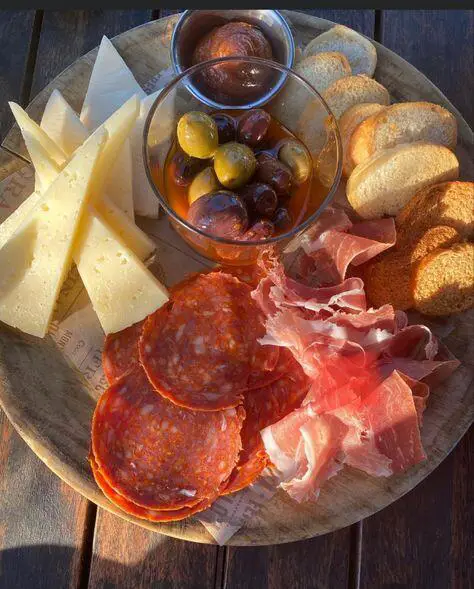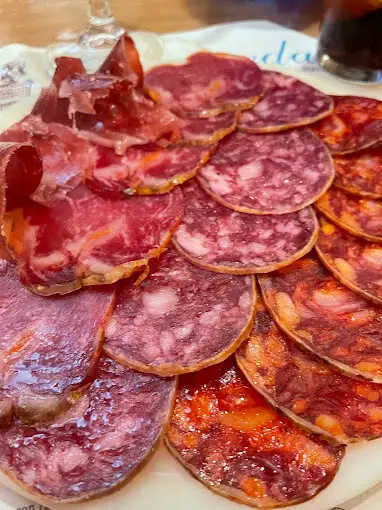Imagine this: a rustic wooden board adorned with an assortment of cured meats, cheeses, olives, and nuts, all meticulously arranged to tantalize your taste buds. You sit with friends and devour this culinary masterpiece, known as a charcuterie board. Truly, even if you do not know how to pronounce “charcuterie” you know that this delicious board has become a staple in gatherings and restaurants worldwide. But where did this amazing and tasty tradition originate?
The roots of charcuterie can be traced back to ancient times, with its origins deeply embedded in European culinary history. The word “charcuterie” itself stems from the French words “chair” (flesh) and “cuit” (cooked), reflecting its association with the preparation and preservation of meat. Don’t ask me how to pronounce “cuit”, I barely passed Spanish 2 in high school.
If you are a history geek like me, you would be excited to learn that one of the earliest mentions of charcuterie dates back to ancient Rome, where techniques for curing and preserving meat were perfected. Romans used a variety of methods, including salting, smoking, and drying, to extend the shelf life of meats and create flavorful delicacies.
Fast forward to the Middle Ages, and charcuterie had become an integral part of European cuisine, particularly in regions like France, Italy, and Spain. Each country developed its own unique methods and specialties, leading to the diverse array of charcuterie offerings we enjoy today. Of course, wine was a must-have pairing with these fabulous creations. My top 8 Spanish wines are perfect to pair with Spanish jamón (link to spanish jamon).
Speaking of Spain, my personal love affair with charcuterie blossomed during a 6 month study abroad to the enchanting region of Andalucia. Nestled in southern Spain, Andalucia is renowned for its rich culinary heritage, where the vibrant flavors of Spanish cuisine come to life. I still feel very grateful for the 6 months I spent in the beautiful city of Granada eating tapas daily and sipping Spanish wine.
In Andalucia, cheese and meat play starring roles in the tapa scene. Manchego, a creamy sheep’s milk cheese, reigns supreme, boasting a distinct nutty flavor that pairs perfectly with the region’s bold red wines. Meanwhile, Jamón Ibérico steals the show as Spain’s prized cured ham, cherished for its melt-in-your-mouth texture and savory taste. You really cannot go anywhere in southern Spain without seeing hanging ham. I mean, even the airports have it available for you at all hours of the day. OBG TIP: As tempting as it might be to bring some of that delicious ham back to the USA, TSA search dogs are also fans of this delicious meat and you will be found out.
In conclusion, the origins of charcuterie are steeped in history and tradition, with influences spanning centuries and continents. From its humble beginnings in ancient Rome to its modern-day hit as a culinary centerpiece, charcuterie continues to captivate food lovers around the world. And for me, it all started with a love affair in southern Spain, where the flavors of Andalucia sparked a lifelong passion for the art of charcuterie.
Food stylist & founder of One Board Gal. Known for creative food tips and simple cheese board inspiration. I am dedicated to helping you bring a lot to the table by sharing tricks, tips, and education for your next gathering.



